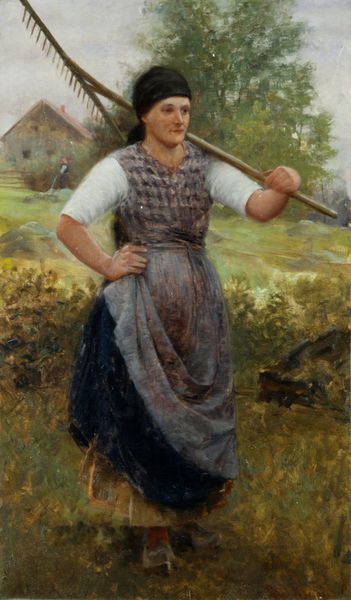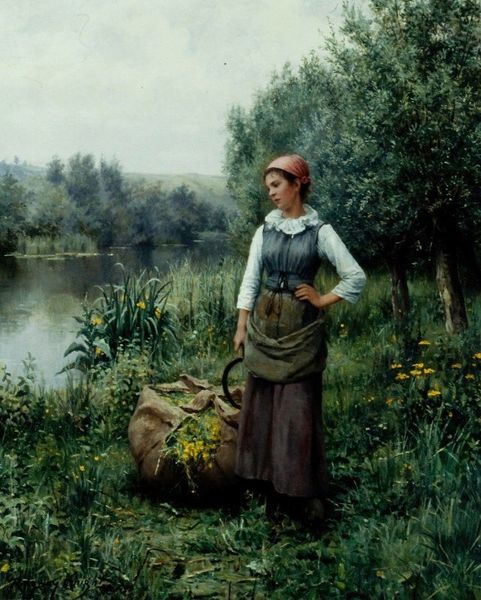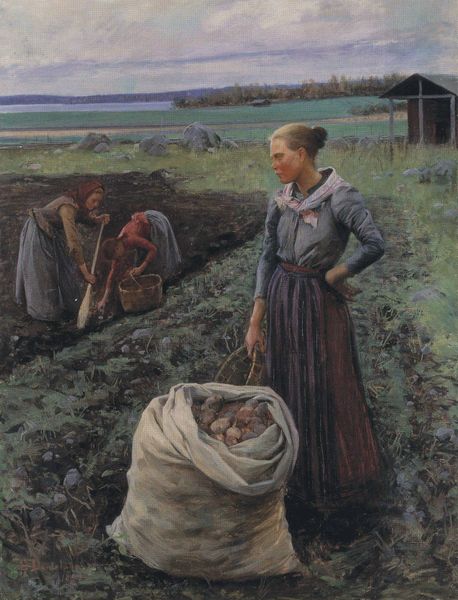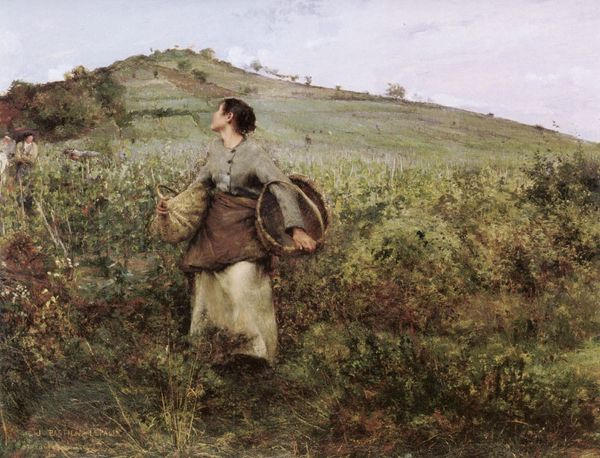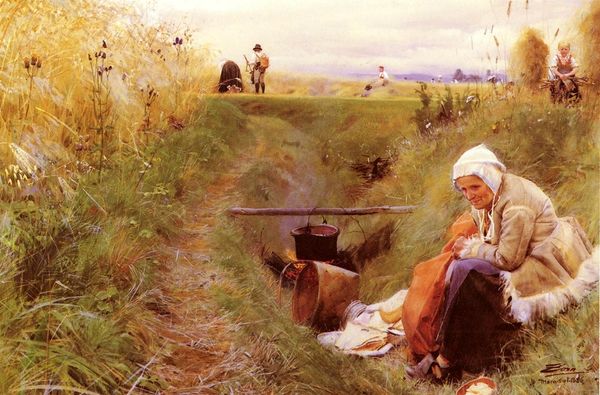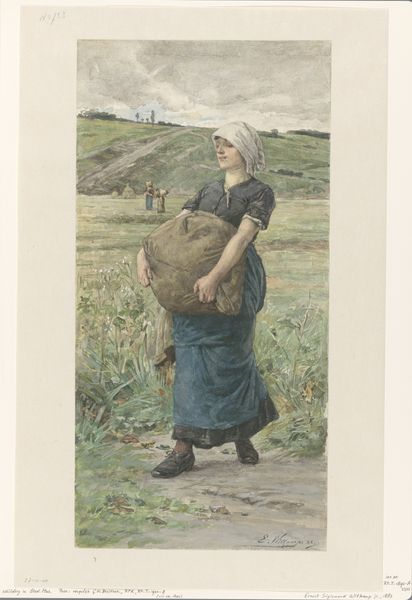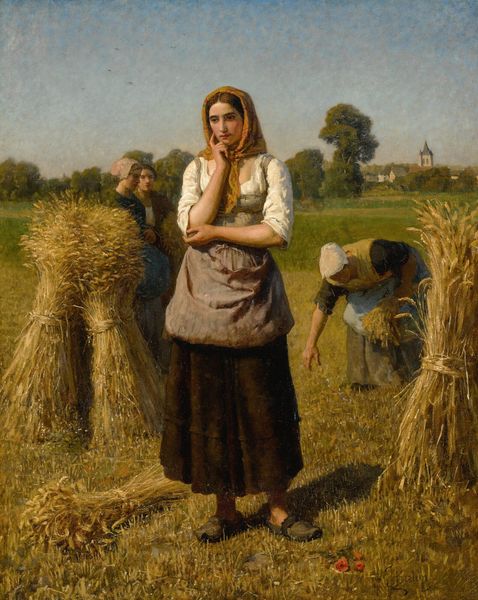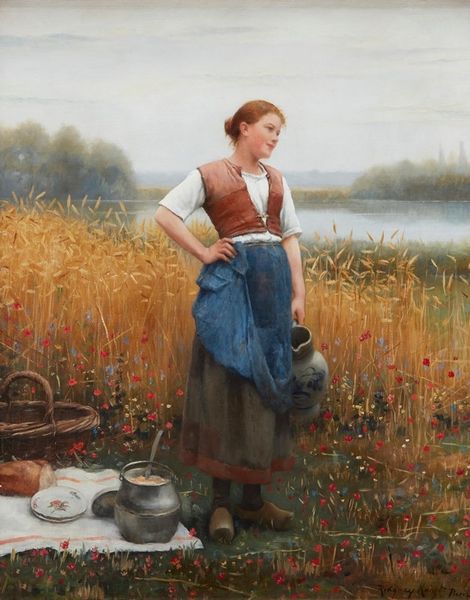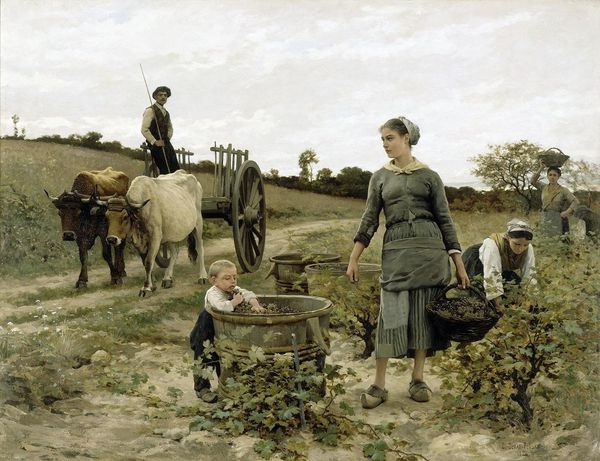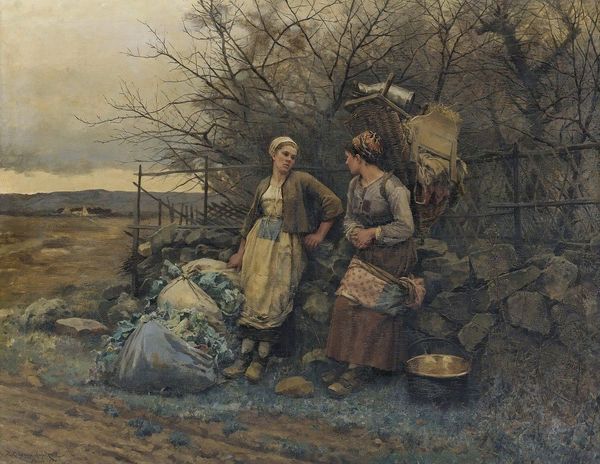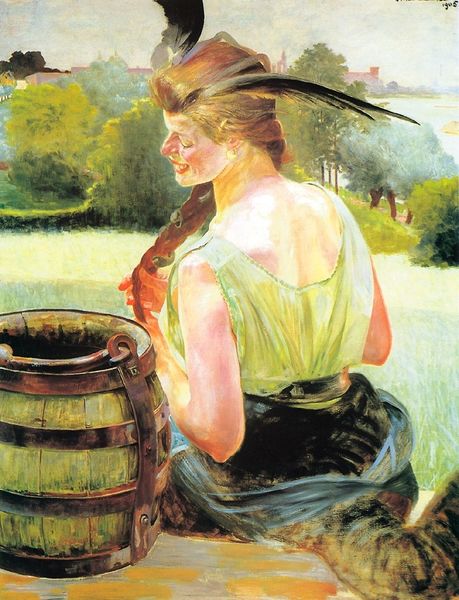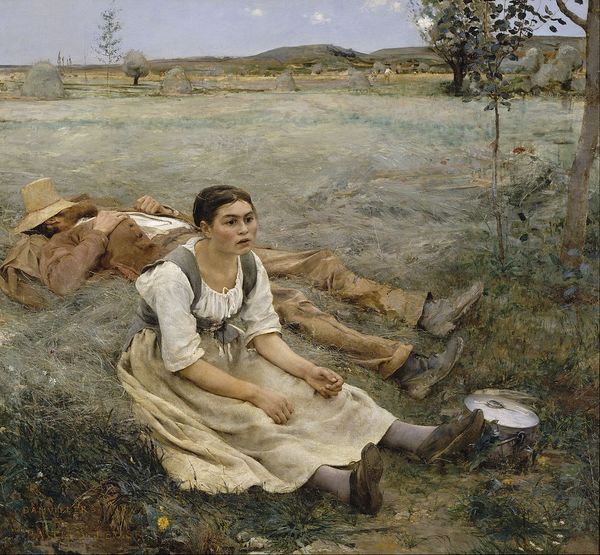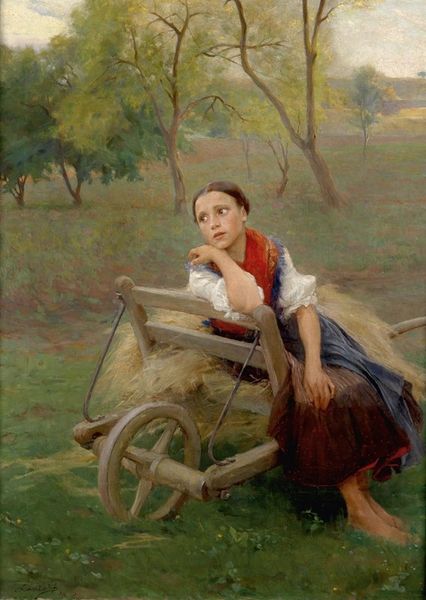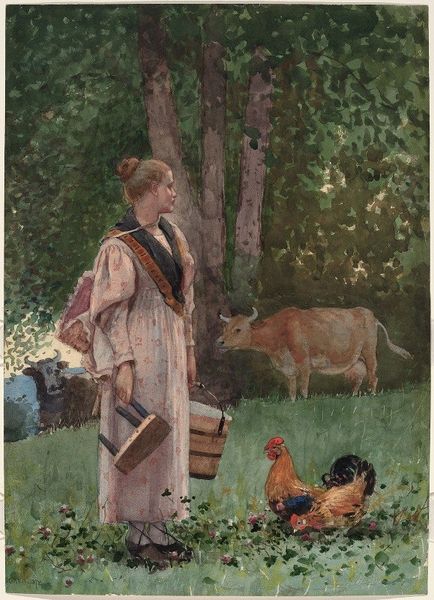
watercolor
#
narrative-art
#
landscape
#
figuration
#
oil painting
#
watercolor
#
coloured pencil
#
watercolour illustration
#
pre-raphaelites
#
watercolor
Copyright: Public domain
Curator: Good afternoon. We are looking at "Whose brown hath lovelier grace", painted by Eleanor Fortescue-Brickdale around 1920. It seems to be rendered primarily in watercolor. Editor: My initial impression is one of gentle contentment. The muted colours and bucolic setting evoke a strong sense of peace. Curator: The title comes from a line in Shakespeare’s Twelfth Night. The context here positions the woman in a long tradition of rural virtue, evoking that yearning for simpler times that was popular at the time, particularly following the upheaval of the first World War. Editor: It’s intriguing how Brickdale draws on archetypes of femininity tied to nature, and hard labor as some kind of virtue. Those pails, while realistically rendered, are also symbolic, alluding to sustenance and the nourishing aspects of the feminine spirit, perhaps also drawing connections to fertility? Curator: That’s a very interesting point about the duality, it brings up an issue around how female artists worked within, or subverted, social expectations through subject matter that was deemed appropriate by a largely male artistic establishment and public at the time. Brickdale exhibited widely and to great acclaim during her lifetime, so it's clear her choices resonated with audiences. Editor: Absolutely, there's a strong sense of idealism present here. That idealized English countryside is ever present with cows in the distance as a symbol of agricultural bliss, but there may have also been underlying meanings and references, related to a cultural anxiety connected to that time. Curator: And the clothing and details certainly contribute to the idealised imagery: she is presented neither as aristocratic or traditionally working class, fitting an accessible ideal for interwar Britain, at a time when traditional social codes were challenged. Editor: Thinking about those cultural ideals, I find myself wondering, does it celebrate them, or perhaps offer a more nuanced commentary on gender and social expectations? Curator: It’s a valuable question that brings us back to considering the context in which art is made and seen, what do we value, how do those values evolve, and who determines which cultural messages endure? Editor: Food for thought indeed. Curator: I concur. Thank you.
Comments
No comments
Be the first to comment and join the conversation on the ultimate creative platform.
